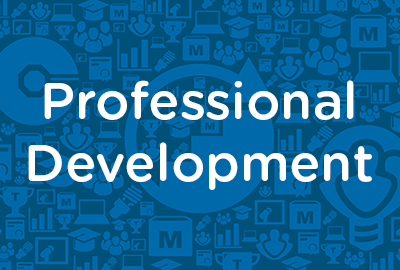 |
Budgeting: Operating Budgets |
1.00 |
An operating budget is a projection of the entire income statement of a company, or department. Operating budgets manage the operations of a company or department. They include the expenses associated with manufacturing, selling, and distributing products. Operating budgets also help to administer the daily functioning of the company. They project the expenses a company will incur in its manufacturing facilities, as well as the revenue that it will generate. |
 |
Budgeting: Manufacturing Budgets |
0.50 |
Manufacturing budgets outline and plan the expenses that a company undertakes to manufacture its products. Until products are sold, the cost of producing them is considered part of the company’s assets as inventory. Generally, you would not consolidate these expenses with non-manufacturing budgets in the master budget. |
 |
Quality Management: Implementing Quality Changes (Instructor Guide) |
0.67 |
Understanding a process is the only way a process improvement team can effectively improve the process. The team must understand how the process currently functions before they can identify problems. In addition, in order to understand how potential changes will affect the process, the team needs to understand specific elements of the process, as well as the process as a whole.
In this course you will learn to: identify the elements of a process, as well as techniques used to streamline a process, and measure various aspects of a process.
This Instructor's Edition of this course includes notes and suggestions to assist you in presenting the material, whether in an in-person classroom setting or as an instructor-led online or distance-learning course. It also provides you with the answers to questions found in mid-lesson activities, as well as in the quiz that concludes the course. |
 |
Student De-escalation Methods and Techniques |
1.25 |
This course equips teachers with effective methods and techniques for de-escalating challenging student behavior in the classroom. It is just one out of many K-12 educational courses we offer. Educators will gain the knowledge and confidence to foster safe and positive learning environments through proactive strategies such as communication, empathy, and active listening. In the event of challenging behavior in the classroom, educators will have the skills to de-escalate the situation while preserving relationships with students and providing them a place to express themselves or their concerns appropriately. |
 |
Creating a Supportive Classroom Community (CDA 3) |
2.00 |
Learn ways to bring out nurturing, caring behaviors in children and youth to create a classroom community where children and youth support each other. Learn how to use non-competitive games to foster acceptance of all children and youth. Identify the strengths and weaknesses for both you and the children and youth in your program, and how to put the strengths to good use creating a sense of acceptance and community. This course is designed to be part of a Child Development Associate (CDA) Credential™ curriculum. It covers CDA Subject Area 3: Supporting Children's Social and Emotional Development and may also be taken as a stand-alone learning event or as part of a broader early childhood education curriculum. |
 |
SCBA Review #1951 (Instructor Guide) |
1.00 |
This is the Instructor Guide for Lesson #1951 SCBA Review. This Instructor Guide is intended to prepare a lead instructor to deliver this course curriculum. Included in this guide is a review of lesson content, instructions for conducting the lesson skill activity and all required lesson materials. The lead instructor must pass this instructor guide course with a minimum score of 80% to receive the course materials for this lesson. |
 |
Business Writing: Formal Proposals |
0.75 |
This course will cover how to create a formal proposal. You will also learn how to add visual elements to a formal proposal, and edit a proposal. |
 |
Customer Service: Customer Service Skills |
1.00 |
A great customer service representative should have skills in three key areas: organization (time and stress management), motivation (letting customers know you care), and communication (vocal, verbal, and visual). The core strength of a good customer service rep is sound knowledge of the organization’s products and services. |
 |
Customer Service: Greeting Customers |
1.00 |
Answering the phone when you know that you might be on the wrong end of a verbal confrontation is difficult, but it’s the first step in dealing with customer service issues. How you answer the phone will set a tone with the customer on the other end. Greeting a customer requires much more than a simple “Hello, how can I help you?” |
 |
Customer Service: Listening and Questioning |
0.75 |
This topic will discuss the various types of listening: passive, selective, and active. You will learn that paraphrasing or summarizing what the customer says is a good way to confirm what you hear. In this course, you will also learn about questioning and the types of questions that are used to elicit the information you want from customers. There are four types of questions: open-ended, closed, alternative-choice, and clarifying. This course will also discuss the examination process that can be used to understand the customer’s problem and prescribe a realistic solution. |
 |
Quality Management: Customer Orientation (Instructor Guide) |
0.75 |
Customer orientation is an organizational mindset in which meeting the needs of the customer becomes an organization’s focus. Customer orientation is an important aspect of quality management because it ensures customer satisfaction by integrating the customer’s needs into strategic planning, product development, and product delivery.
There are three components that comprise customer orientation: awareness of the market, communication of market intelligence to the entire organization, and initiatives to make use of the market intelligence.
This Instructor's Edition of this course includes notes and suggestions to assist you in presenting the material, whether in an in-person classroom setting or as an instructor-led online or distance-learning course. It also provides you with the answers to questions found in mid-lesson activities, as well as in the quiz that concludes the course. |
 |
Anger Management |
1.00 |
Anger is a set of physical responses, emotions, and behaviors triggered by a perceived threat or frustration. Anger can be harmful or helpful, depending on how you cope with your anger and the anger of others. This course will explore how to understand your anger better and manage your anger responses. You'll also examine the causes of anger and ways to use it constructively. |
 |
Benefits of Connecting Seniors and Young Children (CDA 3) |
2.00 |
This course equips you with the knowledge and tools to integrate senior adults into childcare and education programs. Discover how this approach benefits children, seniors, your program, and you, enriching lives across generations. |
 |
Creativity and Innovation: Promoting Team Creativity (Instructor Guide) |
1.34 |
The purpose of a team is to bring together people with diverse personalities, knowledge, education, and experience. This combined diversity encourages creativity and productivity to accomplish a common goal. Teams might consist of people from a single department or several departments.
Teams can generate new ideas, expand on or improve current ideas, make decisions, and solve problems. Teams can also be assigned to a specific task or be made responsible for a broader area, such as responding to changing customer expectations. When team members recognize their roles in a team, and the manager performs his responsibilities, creativity has a better chance of flourishing.
In this course you will learn to: identify characteristics of creative teams, and manage these teams effectively, conduct creative team sessions, and conduct brainstorming sessions, and use creativity to solve problems.
This Instructor's Edition of this course includes notes and suggestions to assist you in presenting the material, whether in an in-person classroom setting, or as an instructor-led online or distance-learning course. It also provides you with the answers to questions found in mid-lesson activities, as well as in the quiz that concludes the course. |
 |
Cross-Cultural Business Communication: Communicating Across Cultures (Instructor Guide) |
1.00 |
When communicating across cultures, you could come across a number of barriers. In addition to language barriers, there might be more subtle obstacles, such as cultural biases and conflicting communication styles. Building relationships with people of other cultures will provide you with the incentive to work through those barriers and achieve effective communication.
In this course you will learn to: establish rapport and build trust, and listen well and provide positive and constructive feedback.
This Instructor's Edition of this course includes notes and suggestions to assist you in presenting the material, whether in an in-person classroom setting, or as an instructor-led online or distance-learning course. It also provides you with the answers to questions found in mid-lesson activities, as well as in the quiz that concludes the course. |
 |
E-Mail Etiquette: E-Mail Messages |
0.50 |
In this course, you will learn how to take advantage of the headers in e-mail messages. You will learn about the “To” field, in which you should type the recipient’s e-mail address. You will also learn when to send carbon copies and blind carbon copies of messages. You will learn the importance of writing a proper subject field for e-mail messages and that the header also includes the date and time of sending messages. Finally, you will learn how to construct the body of an e-mail message, add a personal touch to your messages by including a proper greeting, relay information by placing it in the appropriate order, and use different types of lists effectively. You learned the correct way to write long e-mail messages to keep recipients interested in the information and how to effectively close e-mail messages. |
 |
E-Mail Etiquette: E-Mail Effectiveness |
0.50 |
In this unit, you will learn the importance of considering the recipient before writing an e-mail; the factors to be considered before writing a message, such as your relationship with the recipient, the subject, and the purpose of writing the message; and how to effectively compose messages, anticipating negative recipient reactions such as skepticism and apathy. Finally, you will learn about managing your e-mail, checking your e-mail, handling large volumes of e-mail, helping others manage their e-mail volume, and setting the e-mail program to respond automatically. |
 |
E-Mail Etiquette: Netiquette Guidelines |
0.50 |
E-mail, a relatively new way of communicating, has changed the culture of communication. Online communication has its own rules regarding acceptable and unacceptable behavior. Netiquette refers to the set of rules you should follow when communicating online. |
 |
Quality Management: The Costs of Quality (Instructor Guide) |
0.50 |
Before the quality revolution that began in the United States in the 1980s, quality was frequently viewed as a goal that came at a higher price for production. However, the reality is that poor quality is a result of the ineffective use of resources, including wasted material and labor. Therefore, improved quality means better use of resources and lower costs.
In this course you will learn to: identify the relationship between quality and cost, the benefits of establishing quality requirements, management’s responsibilities for achieving conformance, and the costs of customer dissatisfaction.
This Instructor's Edition of this course includes notes and suggestions to assist you in presenting the material, whether in an in-person classroom setting or as an instructor-led online or distance-learning course. It also provides you with the answers to questions found in mid-lesson activities, as well as in the quiz that concludes the course. |
 |
Beginning a New Career |
0.50 |
In this course, you’ll learn some tips to determine what career is right for you, what to consider before changing careers, how to evaluate yourself as you consider a career, and more. |
 |
Animal Behavior 1: Why Study Animal Behavior? |
1.00 |
Animal behavior is a topic that has fascinated people for centuries. The first course in the series will give an overview of behavior and highlight the many reasons to study animal behavior, the history of behavioral research, and the many different fields that study animal behavior. |
 |
CERT Unit 1: Disaster Preparedness |
1.00 |
The Community Emergency Response Team (CERT) program educates volunteers about disaster preparedness for the hazards that may occur where they live. This course covers the functions of CERT and how CERT fits into your community's emergency preparedness structure. The types of hazards that can affect communities and the hazard's potential to impact people, health, and infrastructure are discussed in this course. In addition, this course also will teach you how to face a potential disaster.
It is just one of many health and safety courses we offer. This course will help you learn the best practices for keeping yourself safe and healthy when on the job. |
 |
Planning for Emergencies (Corrections) |
0.50 |
The Preparing for Emergencies: Strategies for Small Business course is designed to help participants identify a learning goal and expectation for their own business. Throughout this course, participants will assess their own business readiness plans for emergencies, learn about the four steps in the emergency planning process, and learn about emergency management considerations.
|
 |
Sales: Qualifying |
0.50 |
In this course, you will learn how to improve your listening skills to better understand customers’ needs and decision-making criteria. You will also learn how to use questioning techniques to help customers recognize the benefits of your products and services. |
 |
Sales: Presenting |
1.00 |
In this course, you will learn how to create a selling strategy by defining the players, relationships, and personal stakes; how to identify the five types of buyers; and how to prepare to deliver a presentation by writing an elevator pitch and handling customers’ objections. |


























